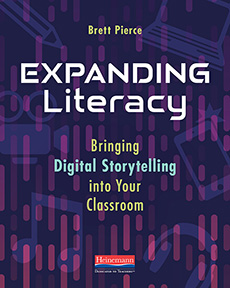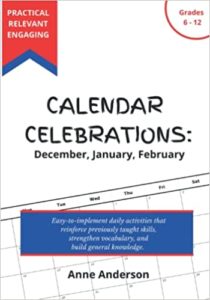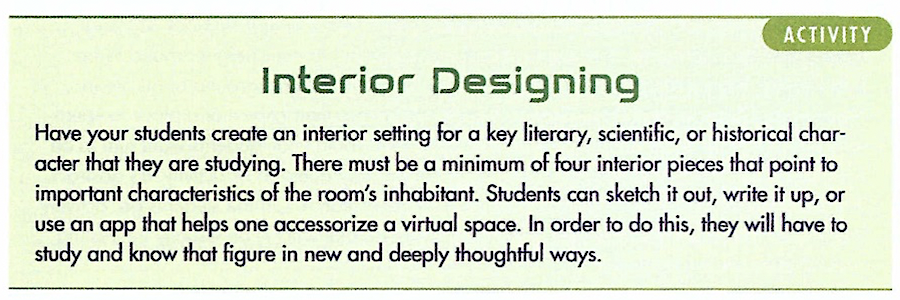Bring Digital Storytelling into Your Classroom
Expanding Literacy: Bringing Digital Storytelling into Your Classroom
By Brett Pierce
(Heinemann, 2022 – Learn more)
Reviewed by Anne Anderson

Although my tech-based anxiety level began to rise, there was no need to panic. We educators are not required to be proficient in all these areas. Our students will figure it out!
Think about it . . . where do today’s young people go for information? Their phones! As Brett Pierce says on page 6, “YouTube is the vast Alexandrian Library of our time.” I breathed a sigh of relief.

Are you looking for a way to engage all students and move all students toward academic success? Consider digital storytelling. It involves a wide range of jobs and skills, including some related to Pierce’s own career with :
- producer (organization; time management; detail oriented)
- storyteller and/or writer (creativity; imagination; writing skills)
- camera person, sound person, editor (decision-making; technical skills)
- researcher (persistence; investigative skills)
- actor (dramatic talent; presentation skills)
- computer programmer (creativity; technical skills)
The goal of Expanding Literacy is “to make digital storytelling normative in the upper-elementary, middle, and high school classroom.” (p.17) Through the chapters Pierce guides readers to that goal. After reading the book, I think this is an attainable goal.
Exploring sound and imagery
By focusing on something new and different, we push ourselves and our students. In the process of learning new skills, we can also have fun. In Chapter Two, the author presents activities “designed to creatively explore and interrogate the component parts of visual and auditory cognizance: sound, imagery, words, and music.” (p. 25)
He introduces four different kinds of sounds involved in digital storytelling: ambient sound, natural sound, Foley sound, and prerecorded soundtracks. The brief explanations are easy to understand. Then there is an activity for each sound type which is designed to increase students’ auditory awareness.
Pierce then moves from sounds to imagery. Here he shares two simple ideas to help students understand the way imagery communicates and how to use imagery effectively in storytelling. My favorite activity in this section is “Captioning Images: Pictures Versus Words.” It addresses a multitude of skills as students work in small groups to develop a title and caption for picture(s) related to the current unit. Social studies and science teachers, this would be perfect for you!
There are activities and ideas for making words (vocabulary) more exciting. The activity for demonstrating how music shapes the tone and mood is extremely powerful. The activities are manageable. I predict your students will be engaged and focused.
At the close of the chapter are three projects that focus on sound, music, words, and imagery. The projects may take several class periods, depending on your adaptations.
Activities that caught my attention
As I was reading about digital storytelling, I found more favorite activities and projects that got my seal of approval. For example, when developing characters Pierce includes activities to help students know their fictional character’s backstory and future story.
He suggests treating setting as a character. This activity from page 63 requires students to know content and demonstrate that content knowledge in a new venue.
What makes this so powerful? The answer is on page 81. “You can’t tell a story about something you don’t know. You can write a paper about something you don’t know.”
Throughout this book, the author points readers to the educational value of storytelling. (p.83)
- Stories have structure.
- Stories require research.
- Stories require organization, collaboration, and problem-solving.
- Stories require explorations of voice and language.
The final chapter includes projects empowering students to control their understanding.
Relax and enjoy this!
If you are thinking, “This all sounds good, but…” Relax. You can start small. There is a suggested schedule included.
Ask your principal or librarian to purchase a copy of Expanding Literacy: Bringing Digital Storytelling into Your Classroom now. Read it and experiment with several activities before the end of the school year. Make sure to invite the building administrators to the premiere – Digital Storytelling in Room 101.
Visit Meridian Stories which Brett Pierce founded and leads to view sample projects and learn about school competitions. You can learn more (in his own voice) in the MiddleWeb article, “Preparing Our Students to Be Digital Storytellers.”

Calendar Celebrations: December, January, February is part of Anne Anderson’s trilogy on quick, engaging activities and resources for months of the school year. (For MiddleWeb she wrote about selected winter celebrations here, about fall here, and about spring here.) Anne has also published articles in IDEAS Plus and Voices from the Middle, publications of the National Council of Teachers of English. She is a frequent reviewer of professional books for MiddleWeb.com.




































